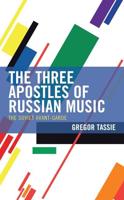Publisher's Synopsis
The study of Viennese harmonic theory has developed widely since Schoenberg educated a generation of American musicians during the 1930s and 1940s. This volume is a critical survey of primary materials: Viennese treatises on harmony, together with some unpublished material, from the late eighteenth to the twentieth centuries, concentrating on the dominant line of fundamental bass thinking which extends throughout the nineteenth century to Schenker and Schoenberg. Taking a chronological approach, it traces the roots of Viennese harmonic theory to the figured bass theory of the eighteenth century, discusses the mixture of figured bass and Rameauian harmony that characterizes most Viennese theory between roughly 1800 to 1850, and considers Sechter's mid-century revival of Rameau's basses fondamentale. Of especial importance is an exploration of Bruckner's reinterpretation of Sechter's system, and its later revisions. Finally, the author discusses the early twentieth-century attempts to resolve the crisis in which the theory found itself at the hands of Bruckner. The book also synthesises the results of a large number of recent German and Austrian studies of nineteenth-century harmonic theory, presenting these from the point of view of an American theorist. Reissue; first published in 1985.ROBERT WASON is Professor of Music Theory at the Eastman School of Music, University of Rochester, New York.










